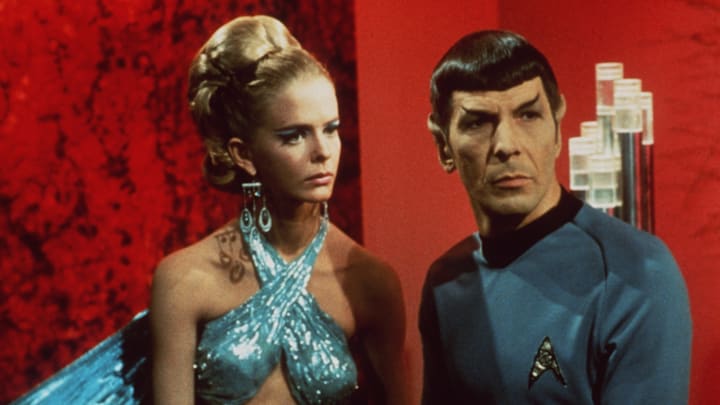2. “The Empath”
Later incarnations of Star Trek absolutely have higher (or at least more modern) production values that go a long way in giving those series and films a sense of realism and believability to space travel. Despite this, I would argue that the original Star Trek is actually the most artistic in the way it is designed and shot. Nowhere is this clearer than in “The Empath.”
Written by Joyce Muskat and directed by John Erman, “The Empath” is almost like a black box theater performance, using darkly lit sets with minimal props to evoke a sense of confusion and mystery. This approach enhances the episode’s storytelling by visualizing how disconnected the Vians have become in their dispassionate torture of Gem and others to “study” emotion.
Of course, doing this was almost certainly motivated, in part, by economics. It is cheaper to have just a few props and some lights in a dark room than it is to construct an entire set, after all. But, by working within those limitations, and having a strong stance on empathy’s vital role in our lives, the episode becomes an artistic masterpiece that tells its story beautifully and honestly.
Other episodes of Star Trek’s third season, like “Spectre of the Gun,” make similar attempts at minimalist sets and economical visuals, but “The Empath” does it best. Also, it is notable for being the final episode of Star Trek to be shot by cinematographer Jerry Finnerman, who had been director of photography for almost every non-pilot episode produced up through “The Empath.”
